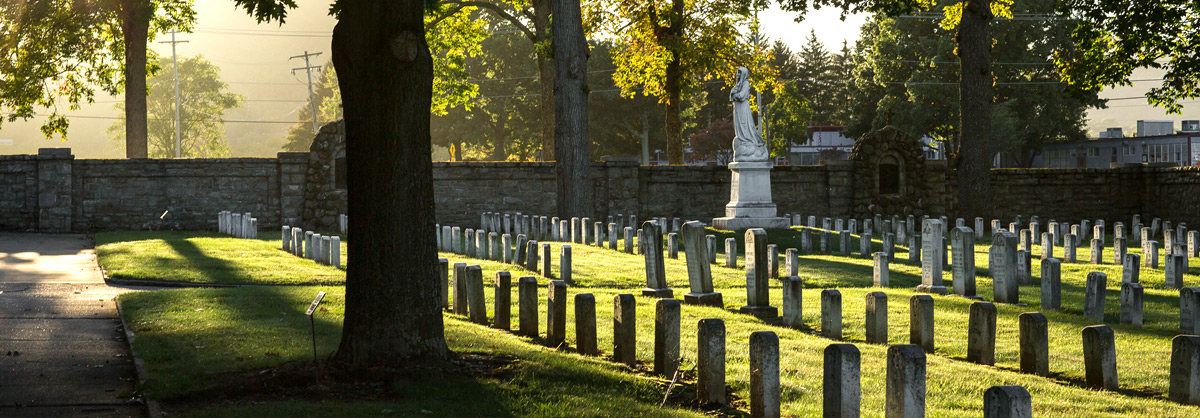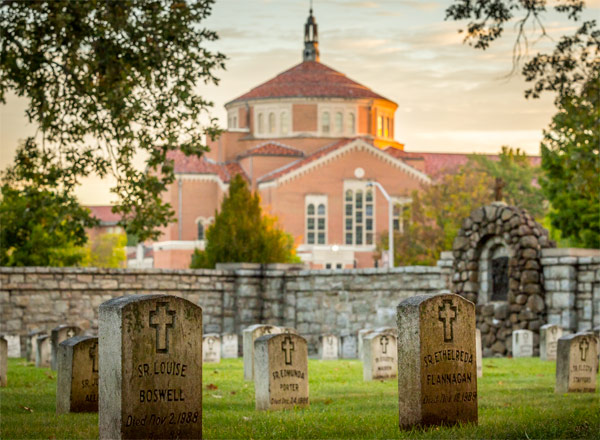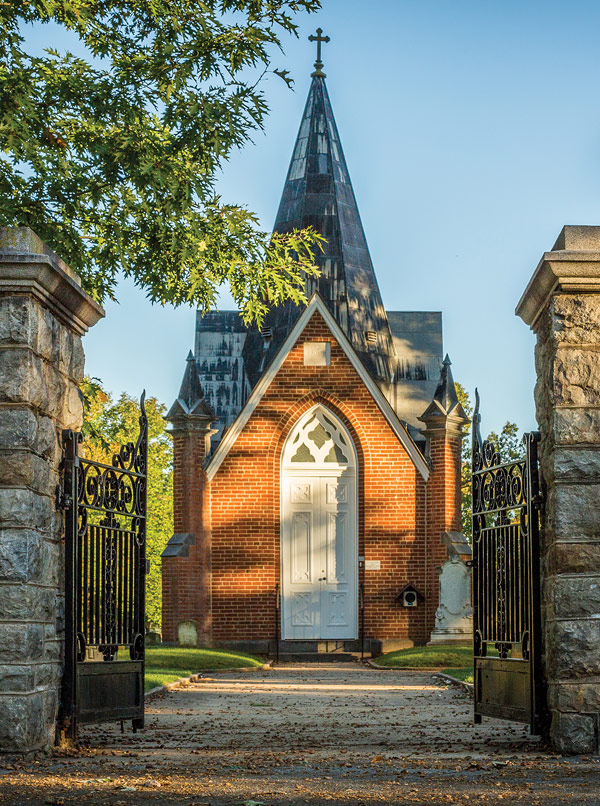
St. Joseph Cemetery
During the summer of 1809, Mother Seton and her companions took a walk through the dense woods on their property to select a site for a cemetery.
According to oral tradition, the attention of Harriet (Elizabeth Ann Seton’s sister-in-law) rested on a large, old oak tree which she designated for her final resting place, by declaring “This is my spot!” and playfully threw an apple core against its trunk. Sadly, within four months, Harriet died, and so she was buried beneath the large oak. Harriet’s grave became the first of many graves of Sisters and Daughters of Charity in the cemetery.

Stations of the Cross
In the stone wall that surrounds St. Joseph’s Cemetery, there are bronze images that depict the Stations of the Cross. The Stations of the Cross show the principal scenes leading up to Jesus’s death. The faithful carry out devotions before the Stations.
If you visit after hours, there is an audio recording of Saint Elizabeth Ann’s legacy at the Stone House, White House, and Mortuary Chapel.

The Chapel
Upon learning of Elizabeth’s death, William Seton had the Mortuary Chapel built to honor his mother. In 1846, the remains of Mother Seton were transferred to the chapel’s vault. They were later exhumed for her beatification and today rest in the Basilica.